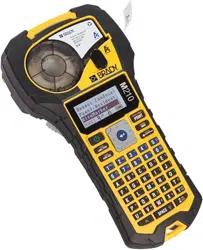Loading ...
Loading ...
Loading ...

M210/M210-LAB User Manual 43
Serialization
Serialization (or sequencing) automatically adds a series of sequential numbers or letters to the printed
labels. The Serial function consecutively places the next number or letter in the defined sequence on
individual labels. The number of labels created is defined by the sequence values you enter.
Serialization can be combined with other data on a label. Any data displayed on a label that includes
serialization will be repeated on every label along with the serial data. You can also incorporate
serialized data into a barcode. However, you can only have one serialized data set per label file. (I.e.,
you cannot put two different serialization sequences on one label.)
How Serialization Works
Serialization is alphanumeric, with numbers from 0 to 9, and letters A-Z. Serialization consists of a
Start Value, End Value, and Increment. The Start Value is the number or letter that begins the
serialization sequence. (You can use multiple numbers or letters in the sequence. However, you
cannot combine numbers and letters in the same sequence.) The End Value is the termination point of
the sequence.
The Increment is the value that is added to the previous number in the sequence to produce the next
sequence number. (You cannot have an increment value of 0.) For instance, a start value of 1, an end
value of 25, and an increment of 4 would produce 1, 5, 9, 13, 17, 21, 25.
Note: Letters are sequenced according to their place in the alphabet. For instance, the letter A
occurs first in the alphabet (1), B is second (2), C is third (3), and so on. When sequencing
letters, the Increment value is still entered as a number.
Examples of Serialization
In a simple serialization, a sequence runs through its full range of numbers and/or letters (i.e., 0 to 9, or
A to Z), one number/letter for each label. Starting with the Start Value, the Increment value is added to
the previous number to produce the next sequence number, until it reaches the End Value.
Example: Simple serialization 1:
Start Value: 1
Increment: 1
End Value: 10
Produces: 1, 2, 3, 4, 5, 6, 7, 8, 9, 10
Sequencing progresses only until the End Value is reached, it cannot go over the End Value. When
the Increment Value is larger than 1, it may produce a sequence that does not print the End Value.
Example: Simple serialization 2:
Start Value: 1
Increment: 2
End Value: 10
Produces: 1, 3, 5, 7, 9
Loading ...
Loading ...
Loading ...
